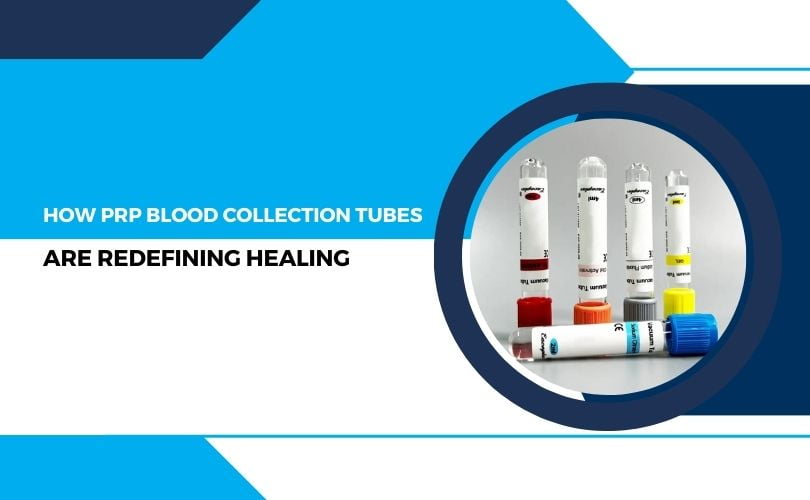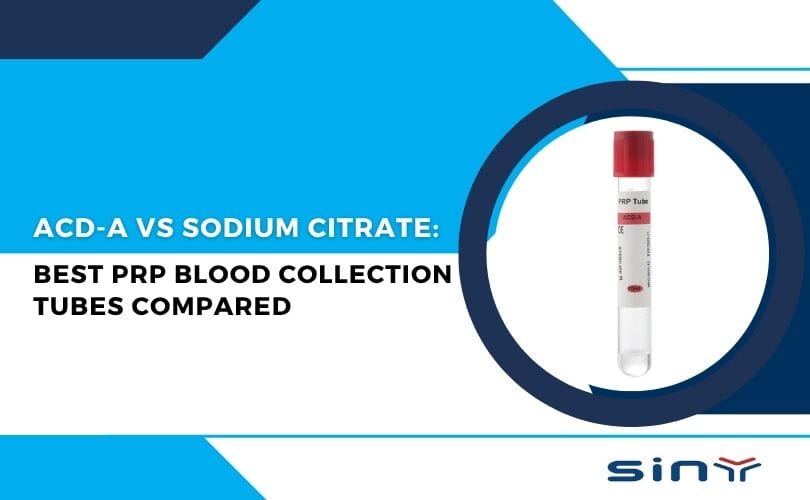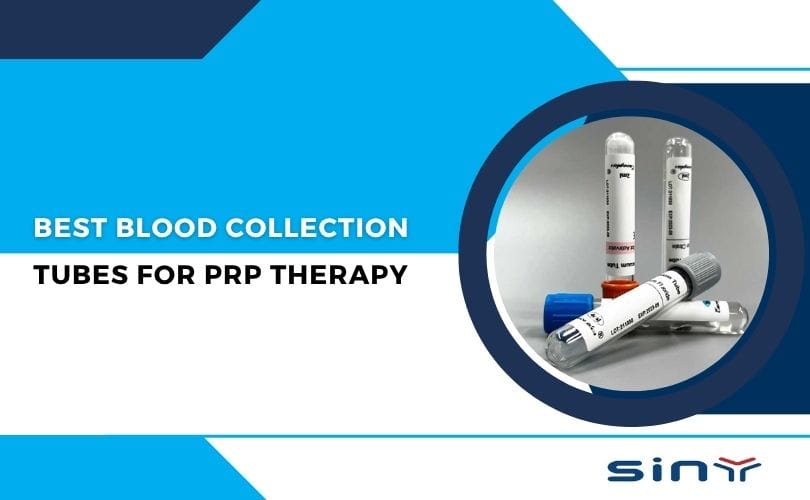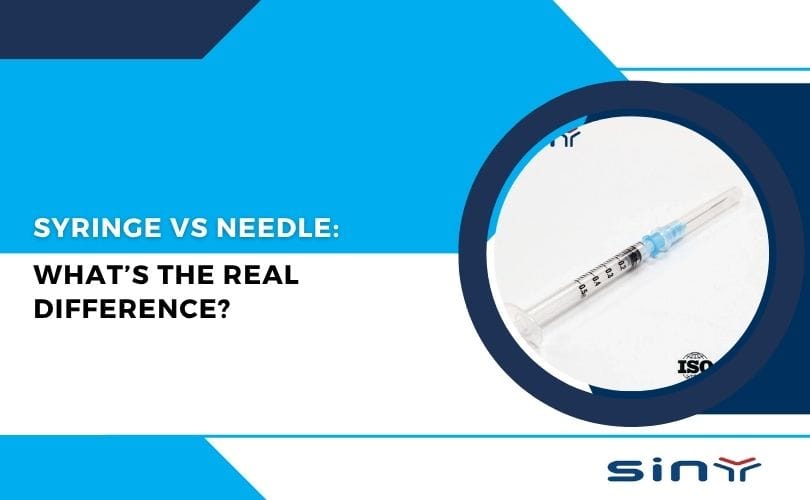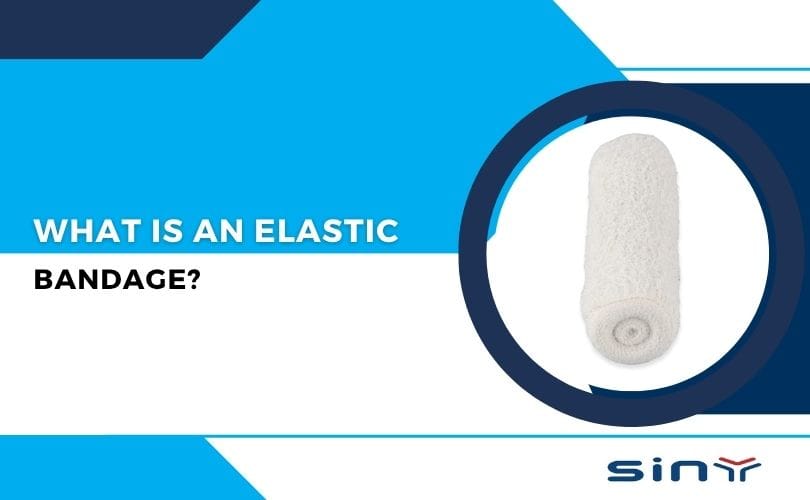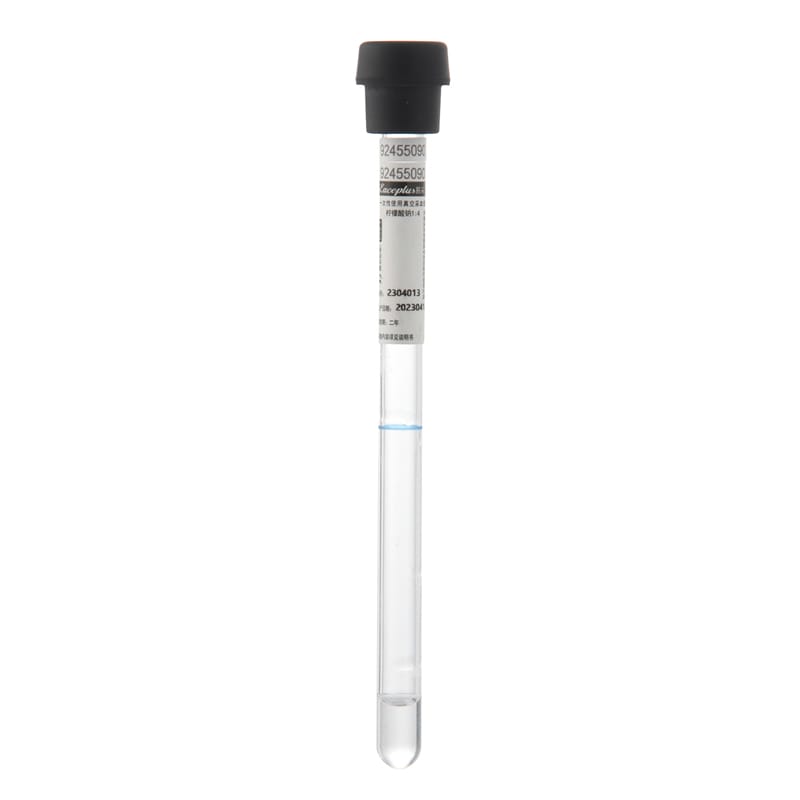PRP blood collection tubes. Platelet-rich plasma (PRP) therapy, once a well-kept secret among elite athletes, has now gained mainstream recognition for its remarkable healing potential. This article delves into the world of PRP blood collection tubes, unveiling their transformative impact on the medical landscape.
Table of Contents
- 1 Introduction
- 2 Understanding PRP Therapy
- 3 The Significance of Blood Collection Tubes in PRP Therapy
- 4 Key Considerations for Blood Collection Tubes in PRP Therapy
- 5 Benefits of PRP Therapy
- 6 Importance of Blood Collection Tubes in PRP Therapy
- 6.1 1. Anticoagulant Properties
- 6.2 2. Efficient Separation Technology
- 6.3 3. Preservation of Growth Factors
- 6.4 4. Platelet Integrity
- 6.5 5. Compatibility with PRP Constituents
- 6.6 6. Sterility and Safety
- 6.7 7. Ease of Use
- 6.8 8. Research Backing
- 6.9 9. Compatibility with Centrifugation
- 6.10 10. Transparent Labeling and Certification
- 7 Key Aspects of PRP Blood Collection Tubes
- 8 Conclusion PRP Blood Collection Tubes
- 9 Faqs PRP Blood Collection Tubes
Introduction
Imagine a treatment that harnesses your body’s natural healing abilities, expediting recovery with minimal invasiveness. PRP therapy does just that. Platelet-rich plasma, a component of your blood rich in growth factors, has been used to accelerate healing in various medical fields.
Understanding PRP Therapy
At its core, PRP therapy capitalizes on the body’s resources to stimulate healing. A small sample of the patient’s blood is drawn and processed to concentrate platelets, which are then re-injected into the target area. These platelets initiate a cascade of regenerative processes, aiding tissue repair.
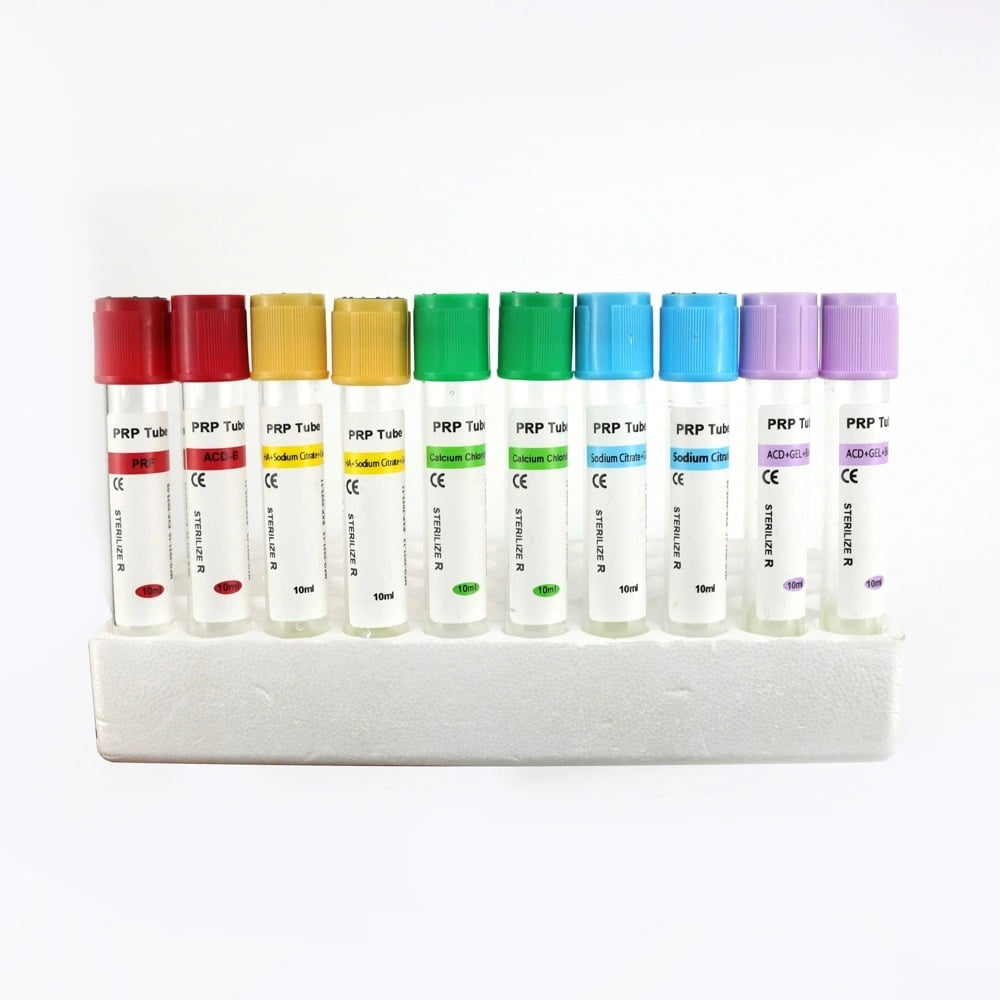
The Role of PRP Blood Collection Tubes
Central to PRP therapy are the specialized blood collection tubes designed to preserve platelet integrity. These tubes prevent platelet activation, ensuring that the growth factors they contain remain potent and effective when introduced back into the body.
The Science Behind PRP Blood Collection Tubes
Best Blood Collection Tubes for PRP utilize advanced centrifugation technology to separate blood components. These tubes efficiently separate platelet-rich plasma from other blood elements by carefully controlling the centrifugal force and time.
The Significance of Blood Collection Tubes in PRP Therapy
Platelet-Rich Plasma (PRP) therapy, a regenerative medical approach with diverse applications, hinges greatly on a seemingly humble yet crucial element: blood collection tubes. These unassuming tubes are instrumental in shaping the effectiveness and success of PRP therapy. They play a pivotal role in preserving the integrity of platelets and growth factors, which are at the heart of PRP’s therapeutic potential.
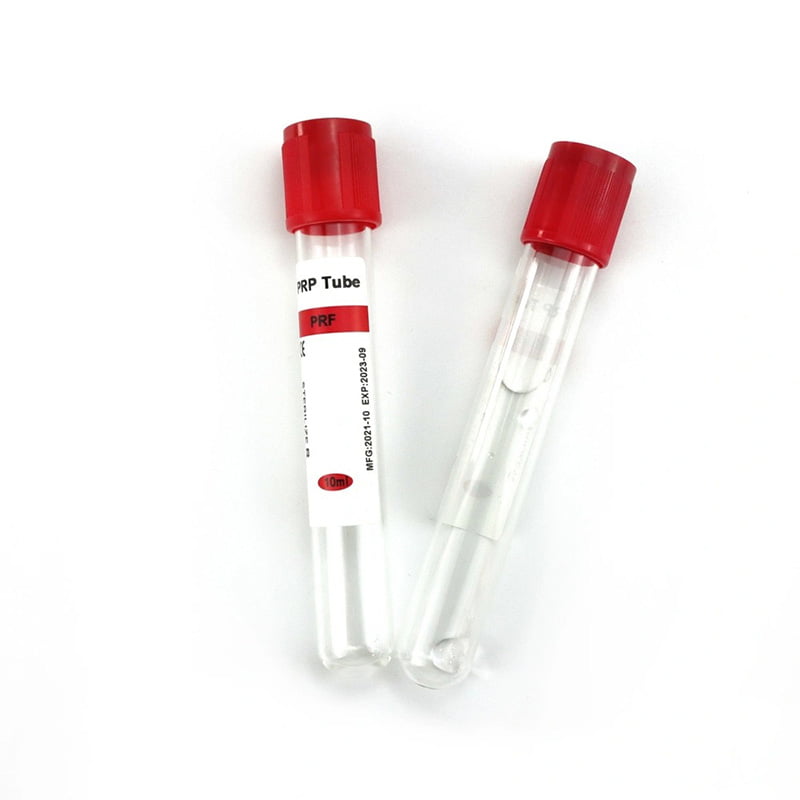
PRP therapy involves harnessing the body’s own healing mechanisms to accelerate tissue repair and regeneration. To achieve this, a small sample of the patient’s blood is collected. However, this seemingly straightforward process carries intricate nuances, particularly when it comes to the choice of blood collection tubes.
Key Considerations for Blood Collection Tubes in PRP Therapy
When embarking on the journey of PRP therapy, healthcare practitioners must give careful thought to the selection of blood collection tubes. These tubes serve as the initial step in the process, influencing the quality and potency of the PRP that will be administered to the patient.
Preventing Platelet Activation
One of the primary goals of blood collection tubes in PRP therapy is to prevent premature platelet activation. Platelets are a vital component of PRP, containing growth factors and other regenerative elements. If platelets become activated too soon, their regenerative potential diminishes, affecting the therapeutic benefits of the PRP.
Maintaining Growth Factor Viability
Growth factors are the biochemical messengers within PRP that stimulate healing and tissue regeneration. Blood collection tubes must be designed to preserve the viability of these growth factors. Tubes with inadequate anticoagulant properties or improper separation methods can lead to growth factor degradation, diminishing the therapeutic efficacy of the PRP.
Efficient Plasma Separation
Blood collection tubes used in PRP therapy must facilitate efficient plasma separation. Plasma is the component of blood that contains platelets and growth factors. Tubes with advanced separation technologies ensure that the concentrated PRP extracted from the plasma is rich in platelets and growth factors.
Compatibility with PRP Constituents
PRP contains various elements, including platelets, white blood cells, and red blood cells. Blood collection tubes should be compatible with these constituents to prevent interference with the separation process. Tubes that promote selective separation while minimizing contamination are crucial for obtaining high-quality PRP.
Benefits of PRP Therapy
The benefits of PRP therapy extend across medical disciplines. Faster healing, reduced pain, and minimal risk of adverse reactions make it an appealing option for patients seeking alternatives to traditional treatments.
Dermatology and PRP Therapy
In dermatology, PRP therapy addresses issues like hair loss and skin rejuvenation. The growth factors in PRP promote collagen production, improving skin texture and hair follicle health.
Cosmetic Enhancements with PRP
PRP’s regenerative capabilities extend to cosmetic procedures. From facial rejuvenation to scar reduction, PRP’s growth factors enhance tissue regeneration for a youthful appearance. The wrong size of the ring.
PRP Therapy in Chronic Pain Management
Chronic pain can significantly impact one’s quality of life. PRP therapy offers a novel approach by targeting the root cause of pain and promoting tissue healing, providing lasting relief.
Future Directions of PRP Blood Collection Tubes
The field of regenerative medicine continues to evolve. Researchers are exploring ways to enhance PRP formulations and delivery methods, opening doors to new possibilities.
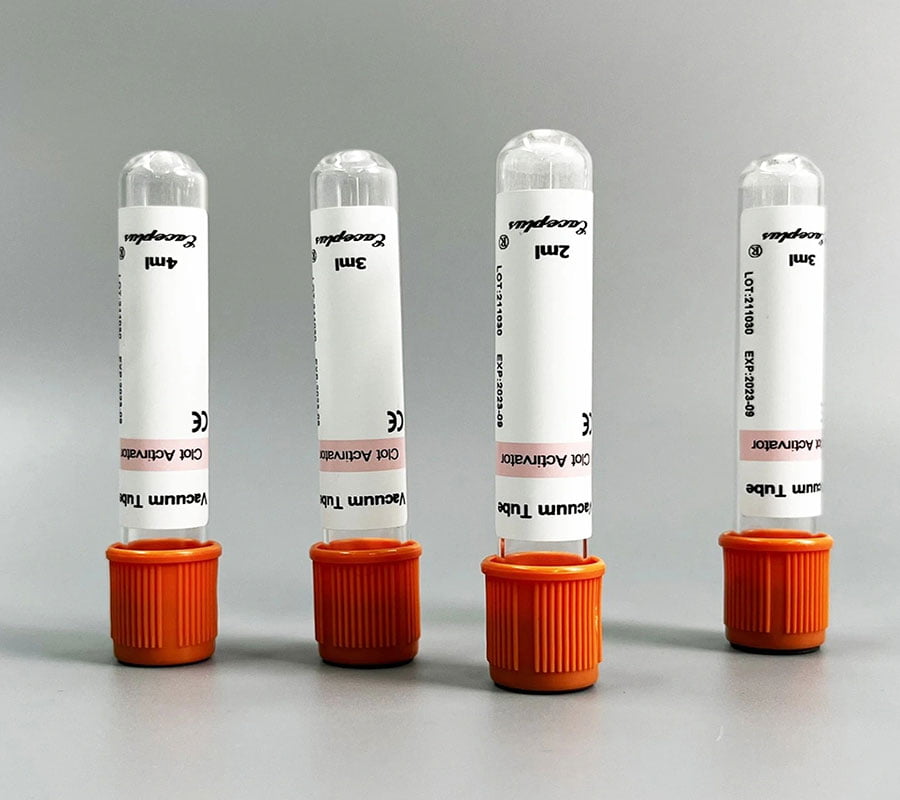
Importance of Blood Collection Tubes in PRP Therapy
Blood collection tubes are the foundation of effective PRP therapy. They impact the quality and concentration of platelets and growth factors, which are vital for achieving desired regenerative results.
1. Anticoagulant Properties
Description: Look for tubes with advanced anticoagulant properties. These properties prevent blood clotting and platelet activation, ensuring that the collected blood maintains its natural state without premature changes.
2. Efficient Separation Technology
Description: Choose tubes that employ efficient separation technology. Tubes equipped with specialized gel separators or double-chamber designs enhance the separation of platelet-rich plasma from other blood components, resulting in a more concentrated PRP.
3. Preservation of Growth Factors
Description: Opt for tubes that preserve the integrity of growth factors. The tubes should prevent growth factor degradation and maintain their bioactivity, ensuring that the therapeutic potential of the PRP is maximized.
4. Platelet Integrity
Description: Prioritize tubes that preserve platelet integrity. Tubes with coatings that prevent platelet adhesion to the tube walls maintain the functionality of platelets, enhancing their regenerative effects.
5. Compatibility with PRP Constituents
Description: Select tubes that are compatible with PRP constituents. Tubes should ensure minimal interference with the natural composition of PRP, including platelets, white blood cells, and red blood cells.
6. Sterility and Safety
Description: Safety is paramount. Choose tubes that adhere to strict sterility standards to prevent contamination. Look for tubes that are manufactured under controlled conditions to reduce the risk of adverse reactions.
7. Ease of Use
Description: Consider the ease of use of the tubes. User-friendly designs that simplify the blood collection process and subsequent steps are advantageous for medical practitioners.
8. Research Backing
Description: Opt for tubes with a strong foundation in research and clinical studies. Tubes with demonstrated effectiveness and positive outcomes in medical research are more likely to yield successful PRP therapy results.
9. Compatibility with Centrifugation
Description: Ensure that the tubes are compatible with standard centrifugation procedures. Tubes designed to work seamlessly with commonly used centrifuge machines streamline the PRP separation process.
10. Transparent Labeling and Certification
PRP Tube for Hair Restoration tubes from reputable manufacturers with transparent labeling and necessary certifications. Clear labeling ensures that you’re using tubes specifically designed for PRP therapy, enhancing treatment safety and efficacy.
Key Aspects of PRP Blood Collection Tubes
In the realm of PRP treatments, the significance of blood collection tubes cannot be overstated. These tubes play a pivotal role in preserving the quality and efficacy of the PRP, ensuring that patients receive the maximum benefits from their regenerative therapy.
Preventing Premature Platelet Activation
PRP therapy relies on the concentrated platelets within the plasma to release growth factors that stimulate healing. Blood collection tubes are designed to prevent the premature activation of these platelets during the collection process. This preservation of inactive platelets ensures that the growth factors remain encapsulated within the platelets until they are re-administered to the patient.

Maintaining Growth Factor Viability
Growth factors are the biological signals that orchestrate tissue repair and regeneration. The right blood collection tubes are essential in maintaining the viability of these growth factors. Tubes with appropriate anticoagulants and separation methods prevent the degradation of growth factors, ensuring that they are potent and effective when introduced to the target area.
Efficient Plasma Separation
A successful PRP treatment hinges on obtaining a concentrated platelet-rich plasma. Blood collection tubes equipped with advanced separation technologies facilitate the efficient separation of plasma from other blood components. This efficient separation ensures that the PRP extracted is rich in platelets and growth factors, enhancing its therapeutic potential.
Compatibility with PRP Components
PRP consists of various components, including platelets, white blood cells, and red blood cells. The selection of blood collection tubes must take into account the compatibility with these constituents. Tubes designed to selectively separate platelets while minimizing contamination by other blood elements contribute to the purity and effectiveness of the PRP.
Maintaining Sterility and Safety
In medical procedures, sterility and safety are paramount. Blood collection tubes utilized in PRP therapy adhere to stringent sterility standards. This ensures that the collected PRP remains free from contaminants that could compromise its therapeutic value. By upholding sterility and safety, blood collection tubes contribute to positive patient outcomes and reduced risks of adverse reactions.
Conclusion PRP Blood Collection Tubes
In an era of medical breakthroughs, PRP blood collection tubes stand as a beacon of hope, heralding a new era of healing. By harnessing the body’s innate healing potential, PRP therapy and its specialized blood collection tubes are redefining how we approach various medical conditions. From sports medicine to chronic pain management, from dermatology to orthopedics, PRP is leaving its mark across disciplines. As science continues to unravel the intricacies of regenerative medicine, PRP remains a shining example of how innovation and nature’s wisdom converge.
Faqs PRP Blood Collection Tubes
What Tube is Used for PRP?
This specialized tube contains anticoagulants and additives designed to prevent premature clotting and maintain the integrity of the collected blood. The choice of the right tube is crucial in preserving the quality and efficacy of the PRP.
How Many Tubes of Blood Do You Need for PRP?
The amount of blood required for PRP therapy can vary depending on the specific treatment and the medical practitioner’s preferences.
How is Blood Drawn for PRP?
The process of drawing blood for PRP therapy is similar to a standard blood draw. A trained medical professional will identify a suitable vein, usually in the arm, and cleanse the area with an antiseptic. They will then insert a sterile needle into the vein to collect the required amount of blood.
How Do You Collect PRP Samples?
After the blood is drawn into the PRP blood collection tube, the tube is placed in a centrifuge. The centrifuge is a machine that spins the tube at high speeds, separating the blood components based on their densities. This process separates the platelet-rich plasma from the other components.


